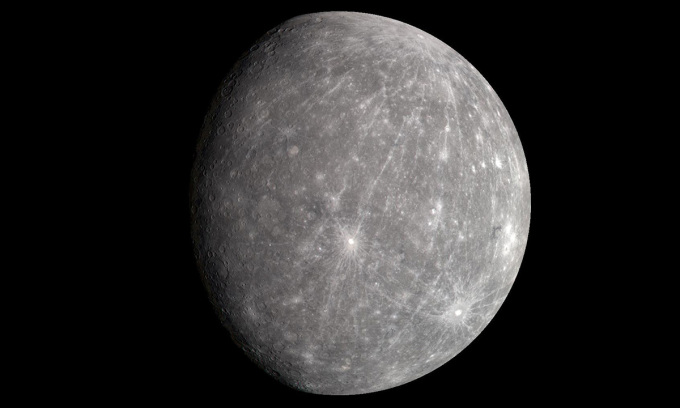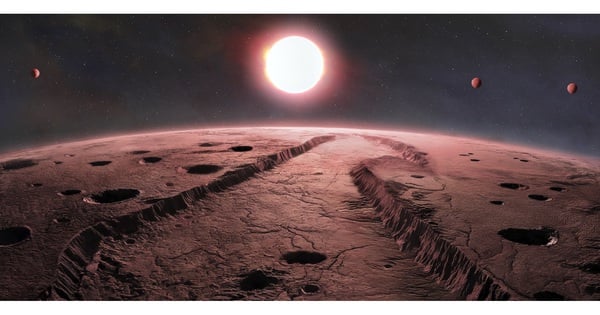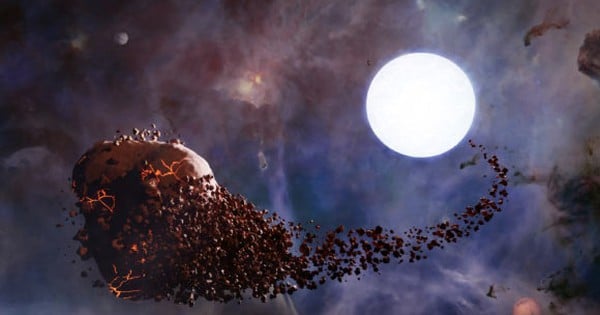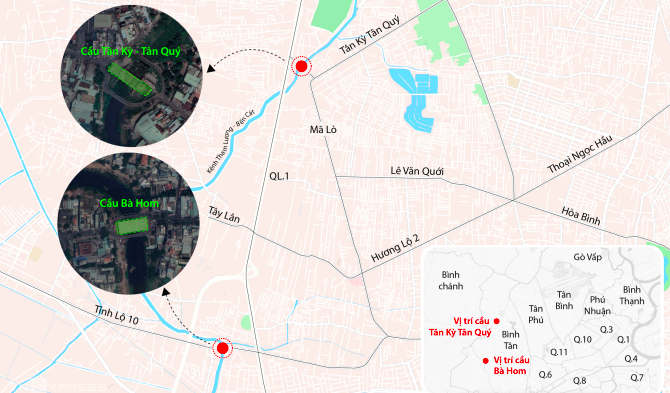In the 19th century, astronomers calculated a planet in the Solar System and named it Vulcan, but no one has actually observed it.

Mercury, the closest planet to the Sun in the system. Photo: NASA
Hundreds of years ago, scientists noticed that Uranus' orbit was slightly different from what Newton's theory of gravity predicted. In July 1846, French astronomer and mathematician Urbain Le Verrier suggested that the discrepancy could be explained by another planet and made a prediction about the orbit of the unknown celestial body.
Le Verrier was not so much interested in discovering the new planet with a telescope as he had already found it mathematically. The task of observing was assigned to the German astronomer Johann Gottfried Galle. On September 23, 1846, Galle looked at the location where Le Verrier predicted the new planet would be. However, Galle got a surprise when he did not see the mysterious planet but instead discovered Neptune within one degree of that location.
Le Verrier was then asked to observe another planet, Mercury. Being so close to the Sun, Mercury is one of the most difficult planets in the Solar System to observe. Le Verrier was tasked with applying Newtonian physics to plot the planet's orbit.
Le Verrier, however, was unsuccessful. He tried hard, but Mercury's eccentric orbit was puzzling. According to Newton's theory, the planets moved in elliptical orbits around the Sun, but observations showed that Mercury's orbit fluctuated more than the gravitational pull of the known planets could account for.
As with Uranus, Le Verrier believed that another planet was causing the change in Mercury's path. He eventually named the mysterious planet Vulcan, after the Roman god of fire.
Soon, astronomers began reporting observations of Vulcan. The first report was made by amateur astronomer Edmond Modeste on March 26, 1859. Based on Modeste's observations, Le Verrier calculated the orbit of the new planet. He believed that it would transit (a planet passing between its star and the observer, such as when Mercury passes between the Sun and Earth) two to four times a year.
Le Verrier refined his calculations based on other observations, but Vulcan has never been reliably observed. Many observations of the planet can be explained by sunspots, known planets, and nearby stars.
Nevertheless, Vulcan persisted for 70 years. In 1879, the media even reported that Vulcan would transit in front of the Sun based on calculations by astronomer Theodor von Oppolzer. However, no one saw the planet. People searched for it during almost every solar eclipse around that time, but failed to see it.
Ultimately, Le Verrier's mathematically generated planet was "erased" by a new physical theory: General Relativity. Einstein's theory could predict Mercury's path without any additional planets influencing it.
General relativity suggests that gravity is a result of the curvature of space-time caused by massive objects, with objects closer to the massive object being more affected. This theory can therefore explain the wobbles in the orbit of Mercury, the planet closest to the Sun. Planets in the outer solar system are less affected because they are farther away from the Sun.
Thus, Einstein's theory can explain the orbits of Mercury, Earth, Mars, Jupiter and many other planets without resorting to other planets. The birth of the new theory also makes Vulcan a thing of the past.
Thu Thao (According to IFL Science )
Source link





![[Photo] Close-up of Vietnam's sniffer dog team searching for earthquake victims in Myanmar](https://vstatic.vietnam.vn/vietnam/resource/IMAGE/2025/4/1/d4949a0510ba40af93a15359b5450df2)
![[Photo] Relatives of victims of the earthquake in Myanmar were moved and grateful to the rescue team of the Vietnamese Ministry of National Defense.](https://vstatic.vietnam.vn/vietnam/resource/IMAGE/2025/4/2/aa6a37e9b59543dfb0ddc7f44162a7a7)
![[Photo] Third meeting of the Organizing Subcommittee serving the 14th National Party Congress](https://vstatic.vietnam.vn/vietnam/resource/IMAGE/2025/4/2/3f342a185e714df58aad8c0fc08e4af2)

























































































Comment (0)